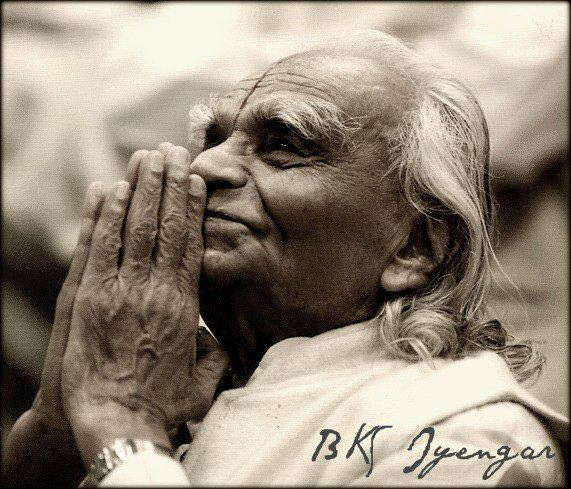Yoga is the name given to this physical, mental and spiritual discipline, which has its roots in ancient India.
One of the most developed concepts of yoga is Patahjali Sutras. Patanjali defines the aim of yoga as the calming down of the restless mind (citta vrtti nirodah).
Iyengar Yoga is regarded as the classic and traditional style of yoga, and is named after its founder master B.K.S. Iyengara (*1918 – † 2014), a follower of Patanjali’s teachings.
This style of yoga differs from the other styles, which are mainly commercial styles of yoga, through its focus on the detailed and precise execution of asanas.
The logic of the tuition, which is based on the assembling of the positions into sequences, allows correct and physiological positioning of the joints and correct muscular action. It also promotes an improvement in physical power, elasticity and concentration.
Iyengar yoga is exceptional in its systematic approach to education and in the purity of the method, which was developed from the life-long daily physical and spiritual practice of Guruji B.K.S. Iyengara.

“Regular practise of yoga can help you to face the turmoil of life with steadiness and stability.”
The regular practice of Iyengar yoga brings positive energy and an improvement of the physical as well as of psychological balance. It helps develop the co-ordination of movement and leads to better awareness of your own body. Importantly, it also strengthens your most important muscle groups and, in doing so, brings relief to your joints and spine.
Different asanas have a different effect on the body. Basic positions taught at the outset of your practice build up strength and stamina, and improve muscular tonus, flexibility and positioning of the body in space. Practice of certain (restorative) positions also decreases tiredness and calms psychological tension. Yoga also benefits the mind and improves concentration.
Teachers of Iyengar yoga are educated, during their own training and through their own yoga practice, in anatomy and the basic physiological functions of the human body. They are taught to give precise guidance during individual lessons. The main aim is to teach the student to understand their body and the correct postures in the individual positions. The teacher is the student’s guide on her/his path to learning and overall transformation.
What can be expected from certified teachers during a Iyengar Yoga lesson?
- Precise use of language as well as corrections targeted to the individual
- Instruction in the use of props (blankets, blocks, chairs and straps), which adapt the yoga positions to individual requirements of the student
- Use of yoga for relief of health problems and stress
- Safe and systematic progress in yoga positions, constantly improving the student’s abilities and skills
- Sequences, which improve your strengths, flexibility, stamina and proper position of the body
- Integration of yoga philosophy with asana practice
- Integration of yoga practice into daily life
Not only healthy people benefit from Iyengar yoga practice. Iyengar yoga is also suitable for persons with health problems. Problems such as back pain, depression, high blood pressure, and a weakened immune system can be successfully eliminated by the unique therapeutical processes and sequences of positions that Guruji Iyengar invented and which his followers are constantly improving to this day.